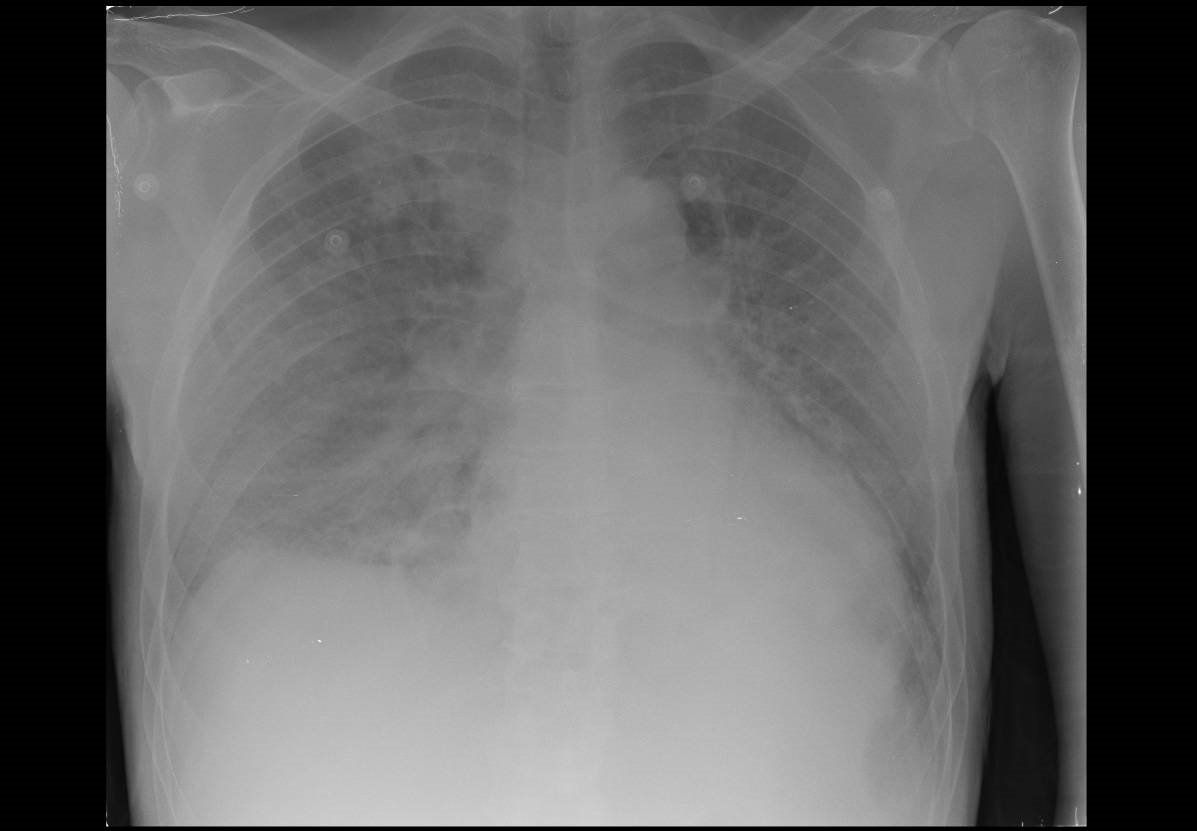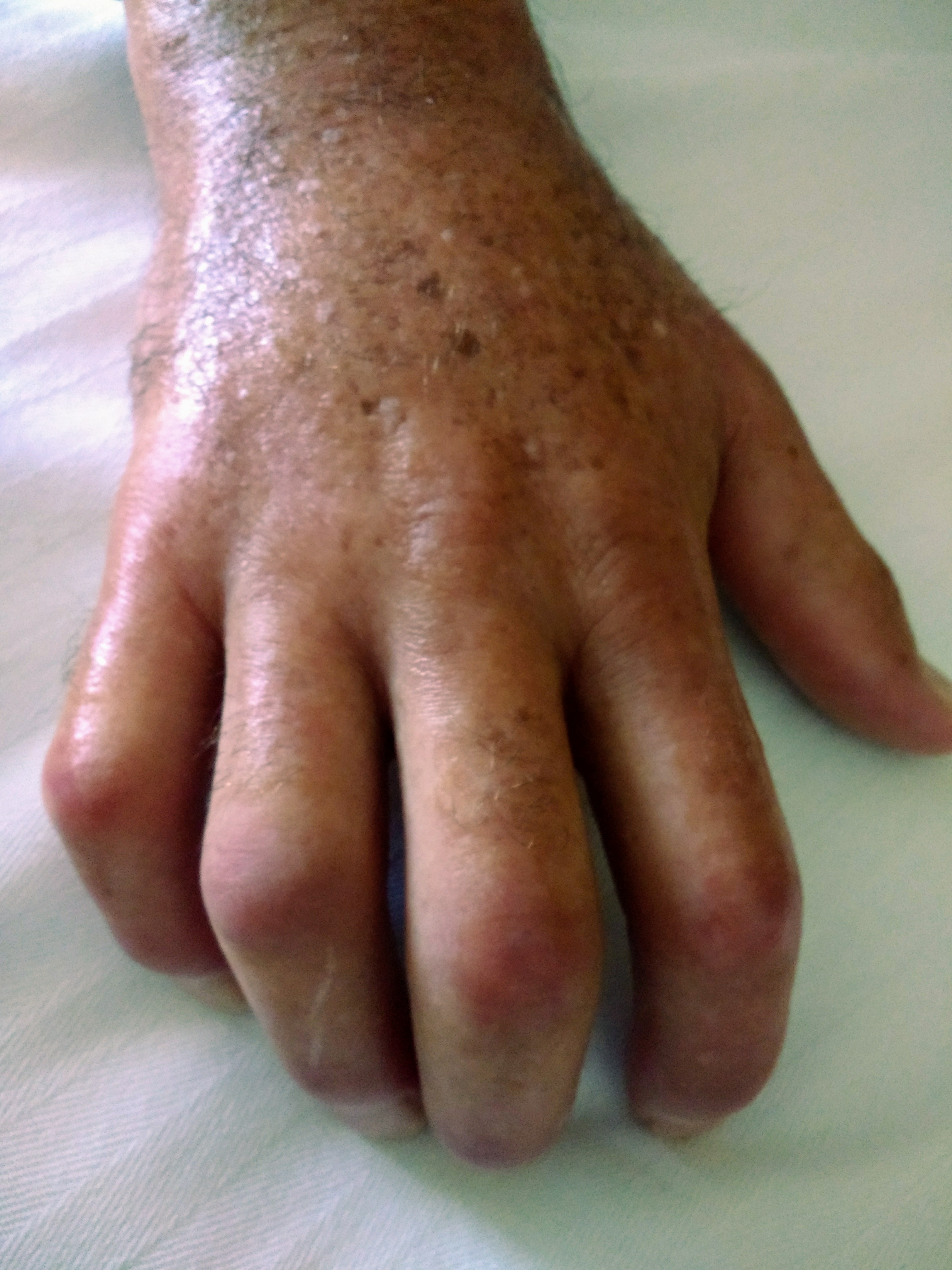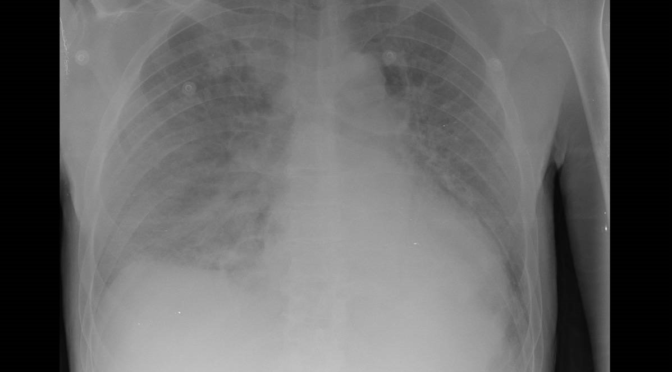Clinical reasoning exercise: An unexpected holidays
Objectives : To show the different theoretical approaches for a differential diagnosis: Pattern recognition , Hypothetic deductive reasoning.
The images shown here have the informed consent of the patient.
An unexpected holidays
Jacques decided to spend some days in the south of Spain. He was now a 53-year-old man with a diagnosis of systemic sclerosis two years ago, with mild pulmonary involvement and hypertension. Belgium weather was horrible in winter and he decided to stay at a friend´s house for fifteen days, but his plan was going to suffer a change.
Three hours after leaving the plane, he went to bed early to rest after the long trip, but suddenly he started with shortness of breath and central thoracic pain, without nausea or vomiting. He went urgently to a first emergency facility where they found a high-blood pressure (200/110) and the doctor decided to give him an intravenous diuretic and hydrocortisone, with a light reduction of the blood pressure and an improvement on his dyspnea. He was transferred to another hospital.
Image 1: 1A First X-ray at the first visit. 1B: X-ray after diuretic treatment.


Question #1
Could you be able to write the exact diagnosis at this moment?
Comment #1
When you recognize a specific entity, you are retrieving information from your mind that allows you to make the diagnosis. This information can be an exact replica of the case, what is called Instance-based recognition, or can be a prototype, that means a summary of different, but close clinical cases, producing a model that integrates the key data of a particular disease.
Clinical evolution
The patient was transferred to a tertiary hospital for urgent attention. The patient referred as the key symptom the presence of shortness of breath when resting, but he said that he was better when standing up. No fever, cough, or nausea or vomiting was present. No chest pain in this second anamnesis.
Physical examination: BP: 150/95 mmHg. Oxygen saturation breathing room air: 92%. Mild basal bilateral pulmonary rales. Arms and hands swollen. No clinical data of deep venous thrombosis in the legs.
Lab tests: Hemoglobin: 11,7. WBC: 16930; P: 238.000. Creatinin: 2,2(normal 1,3) Na: 133; K: 4,1; LDH: 275; NTproBNP: 50379. CK: 38. CK MB: 1,7. Troponin level: 0,164. Urinalysis: Protein ++.
Echocardiogram: mild hypertrophy of the left ventricle. Right ventricle and right atrium normal.
Summative Processing
In summary, this patient has an acute episode of dyspnea and orthopnea, with transitory central thoracic pain and coincided with a very high blood pressure and mild proteinuria, with a previous diagnosis of systemic sclerosis.
Image 2: The patient´s hands

Working the Differential Diagnosis
At this point, maybe you have the exact diagnosis or maybe you have several diagnostic options what is properly named as a “Differential Diagnosis”, that can be exposed as a “List of clinical entities” based on prevalence, your intuition and your experience. In this case you should have to confirm or discharge your options after more information is obtained.
Question #2
What is your list of Differential Diagnosis? If you want to see our list, click here
Comment #2
A Differential Diagnosis list is elaborated based on prevalence, situation of worst-case scenario, the context of the patient and the personal intuition and experience of the doctor. Usually the work to confirm or discharge an entity runs “in parallel”, considering several possibilities at the same time.
The new information to select options comes from the re-examination of the patient or from laboratory or radiology data. Electronic tools can be very useful to complete our list with uncommon clinical problems.
Working with a list can be time-consuming and there are other methods to approach the problem.
Syndromes, key and differentiating features and a prioritize Differential List
Instead to write a complete list of individual clinical entities, the signs and symptoms of the patient can be summarized in one or, sometimes, two or three syndromes, but usually one of them is selected to start the diagnostic process.
a) Step #1: Specify the syndrome or syndromes. Then, it is necessary to detail the diseases inside each syndrome.
As an example, you can see the syndromes associated with this clinical case here.
b) Step #2: Now, using the entities inside a syndrome (usually three or four) you should elaborate a prioritized Differential Diagnosis. This technique establishes three tiers :
.Tier I (High probability): includes the diagnosis that explain most or all the patient´s data.
.Tier Ib (worst-case scenario): always include here the clinical entities that you should not forget due to the risk for the patient, according to the clinical picture.
.Tier II: includes diseases that can explain many data of the patients , but not all.
.Tier III (Low probability): entities with a low probability for a final diagnosis.
If you want to see an example of a prioritized differential diagnosis click here
Final Diagnosis: make your last decision
Scleroderma renal crisis in systemic sclerosis



